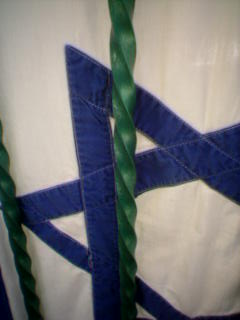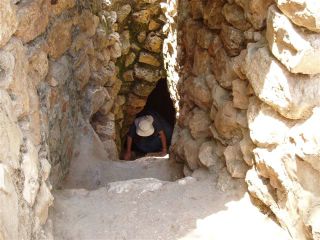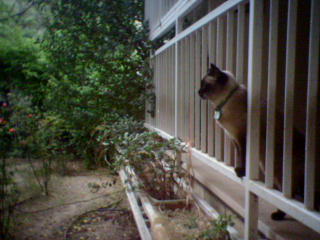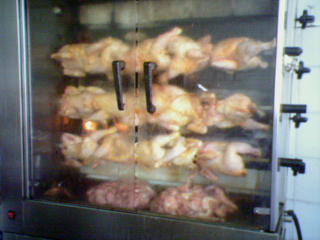A House Divided (or, What Would Henrietta Say?)
I have no problem with the concept of a mehitzah (plural: mehitzot), the divider between men and women in Orthodox Jewish synagogues. I enjoy davening among women and I like the privacy the mehitza gives me. Many women dislike the very concept of the mehitza and refuse to worship in any synagogue that contains one, but that attitude is too general for me. Like I often say, it’s not the what, it’s the how. In this case, I prefer to distinguish between the concept of the mehitza in general and the structure and placement of individual mehitzot in particular.
Mehitzot carry messages, intentional or not. (Actually, I believe that most of the messages are intentional.) A mehitza that runs down the center aisle of a synagogue calls out an unqualified welcome to everybody, men and women alike, while still maintaining the required separation during prayer. It shows that the people in charge took the women’s feelings into account from the beginning and regard women as part of the worship community. A mehitza that places women at the back of a synagogue may still be friendly, but in my opinion its welcome is a bit less enthusiastic. Balconies? I suppose that’s a matter of the building’s age. At one time balconies were common, but they are too physically cut off from the main worship space for my comfort. Also, such distance seems inappropriate and anachronistic today, when high-level Jewish education for women is blossoming. For me, a balcony built in a contemporary synagogue tells me that I am not a member of the family but rather a guest who is expected to keep her distance and know her place.
Long ago I was in a synagogue that had a balcony with floor-to-ceiling white sheets at the front. Since I was unable to see or hear anything in the main section, I quietly left. On the way out it occurred to me that a sign reading “Women Need Not Attend” would have been much less expensive and a good deal more honest.
What made me decide to write a post about mehitzot? A few weeks ago I went to Hadassah Ein Kerem Hospital for a checkup. On the way out, I decided to check out the synagogue. It was a simple affair as such things go: one large room with chairs and an Ark containing the Torah scrolls at the front. The women’s section was the last row of chairs, separated from the rest of the room by a heavy wooden screen.
In the spirit of teacher and rabbinical pleader Rivka Lubitch’s project of photographing synagogues from their respective women’s sections in order to give viewers an idea of what women see (or, more often, don’t see) from there, I took several photographs of the synagogue from various angles. Here is what most of the synagogue looks like.

This is what the women’s section (or, more accurately, the women’s row) looks like from the outside.

The photograph below was taken from inside the women’s row, facing the synagogue entrance. (The young man in the photograph stood there for quite some time while I waited for him to move so I could take the picture. In the end I gave up waiting and took it anyway.)

Finally, here is the view of the synagogue from inside the women’s row, at eye level, standing.
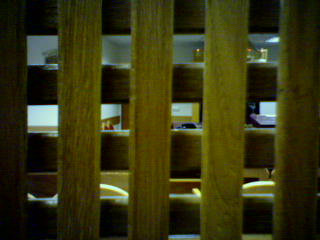
I suppose I should be grateful that at least there is space for women to pray here. The synagogue in the Jerusalem Central Bus Station has no women’s section at all, and the bus station’s rabbi sees no problem with that. Still, I can’t help wondering what Henrietta Szold, the founder of Hadassah, would say if she were to see this arrangement. (When Szold’s mother died, she insisted on reciting the kaddish for her, refusing the offer of a male friend of the family to perform the mitzvah instead.)
I also wonder what some of the women donors of Hadassah would say if they knew.
A final note: when my women’s prayer group, Shirat Sara, celebrates a bat mitzvah, the bat mitzvah girl’s male relatives sit behind a mehitzah in order to watch her read Torah and give a talk on the particular week’s Torah portion. It often happens that the men approach us afterward to say: Now we know what being behind the mehitzah feels like for you.
There’s no teacher like experience.






